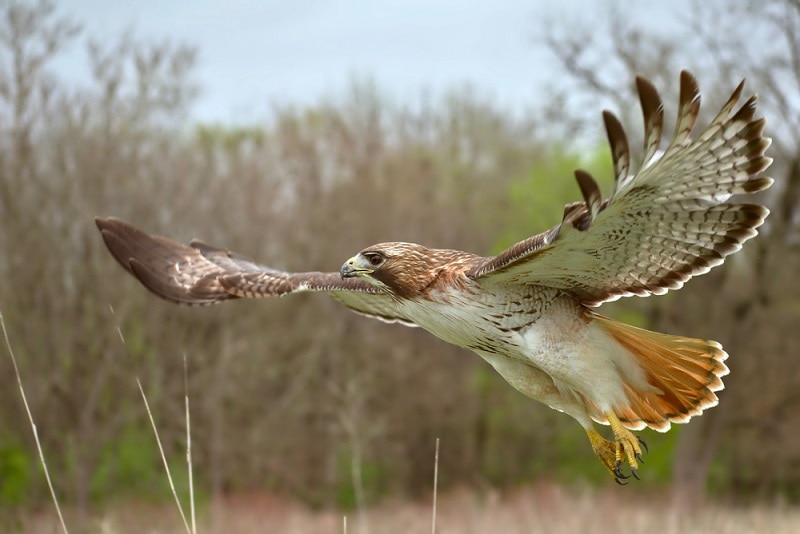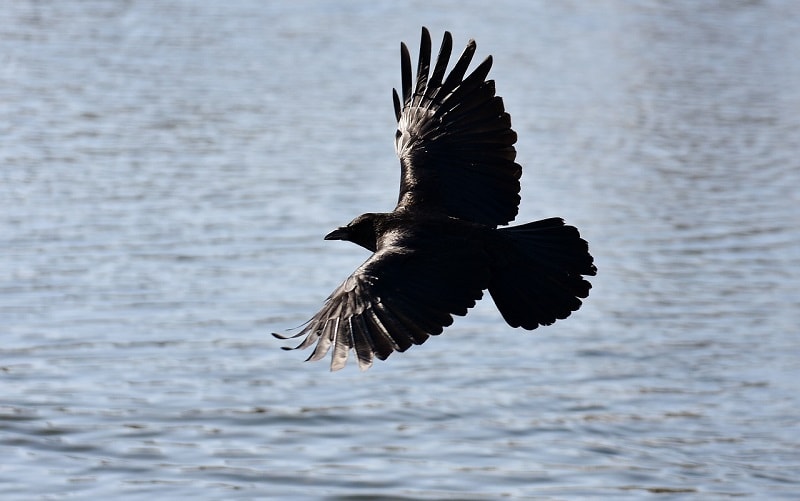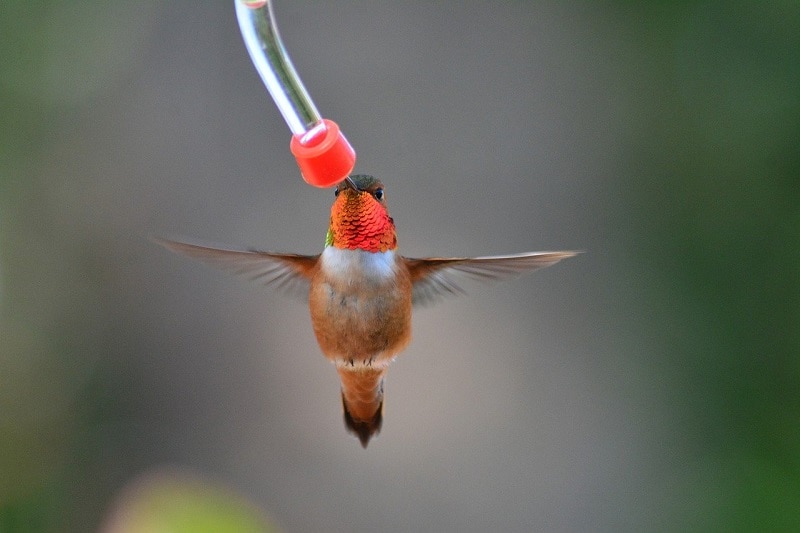6 Types of Bird Wings
Last Updated on

Birds are amazing animals. Over 1.5 million Americans go birdwatching, spending over $75 billion a year on supplies and travel. The interest in our feathered friends continues to soar as more people become fascinated with these winged creatures.
The striking thing about birds is that they all have similar bodies. They have a beak/bill, two wings, and two legs. Contrast that with mammals, where you have a diverse collection of species, from monkeys to rabbits and humans. However, birds have evolved with different types of wings that have allowed them to adapt to the various challenges of their environments.
We think that you’ll look at them differently after we show you the varying kinds of bird wings.

The 6 Types of Bird Wings
1. Elliptical Wings

You’ll find birds with elliptical wings in wooded areas and scrublands, where maneuverability is an adaptive trait. After all, these animals need to be able to move fast with excellent agility through trees and other obstacles. Their flight and flapping are rapid too. Examples of these birds include pheasants, crows, and cardinals.
2. Hovering Wings

Hovering is a behavior associated with feeding or hunting. Interesting, the birds that have these types of wings run the gamut from predator to prey. They typically beat their wings fast, giving them time in flight to stay in one place. Examples include the American Kestrel, the Marsh Hawk, and perhaps the most well-known of this group, the Ruby-Throated Hummingbird.
3. High-Speed Wings

Birds with high-speed wings are among the fastest species on the planet. The shape of these appendages is usually thin and long, often with a pointed tip. It is aerodynamically sound for long stretches in the air, often for feeding. You’ll see them in swallows, which snatch up insects on the wing. Others include falcons, swifts, and terns.
4. Active Soaring Wings

Birds with active soaring wings don’t have great maneuverability. However, these wings are excellent for staying in flight without using much energy because of their aerodynamic shape. The wind supplies the lift that they depend on — after a running start. You’ll find species with this type often near water. They include gulls, albatrosses, and petrels.
5. Passive Soaring Wings

If you’ve ever seen a Red-Tailed Hawk or Bald Eagle flying high on the thermals, you’ve witnessed a bird with passive-soaring wings in action. You can often identify species on the wing by how they’re flying and at what height. For example, pelicans often soar relatively high overhead, moving slowly in small groups. You can pick out a vulture from a hawk by its characteristic V-shaped flying pattern.
6. Flightless Wings

Flightless wings aren’t an official type, but they’re still worth mentioning because they are such a stark contrast from the others. Many of these species are large, such as the Cassowary or Kiwi. What they don’t have with flight, they can make up for with running speed. For example, an Ostrich could easily outpace a human at 45 mph.

Final Thoughts
Flight has always fascinated humans. We’ve admired from afar how our feathered friends can take off seemingly effortlessly. A closer look at these animals reveals several wing adaptations that are a reflection of a species’ biology, feeding behavior, and habitat. While birds may seem similar, evolution has equipped them in unique ways for the survival of the fittest.
Featured Image Credit: Brent Simon, Shutterstock
About the Author Robert Sparks
Robert’s obsession with all things optical started early in life, when his optician father would bring home prototypes for Robert to play with. Nowadays, Robert is dedicated to helping others find the right optics for their needs. His hobbies include astronomy, astrophysics, and model building. Originally from Newark, NJ, he resides in Santa Fe, New Mexico, where the nighttime skies are filled with glittering stars.
Related Articles:
10 Types of Hummingbirds in Arkansas (With Pictures)
8 Types of Hummingbirds in Nebraska (With Pictures)
5 Types of Hummingbirds in Idaho (With Pictures)
3 Types of Hummingbirds in Mississippi (With Pictures)
8 Types of Hummingbirds in Kansas (With Pictures)
5 Types of Hummingbirds in West Virginia (With Pictures)
5 Types of Hummingbirds in Ohio (With Pictures)
Where Do Nuthatches Nest? Nuthatch Nesting Habits Explained
